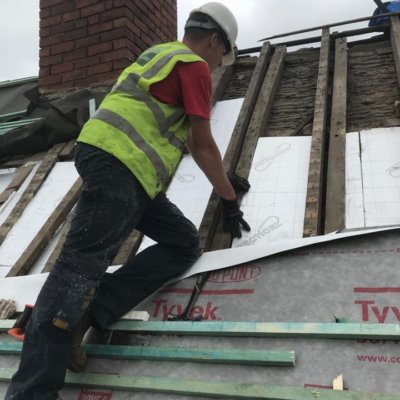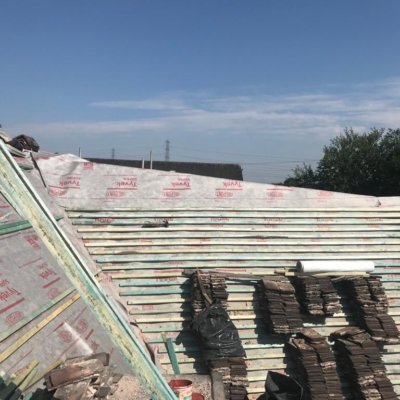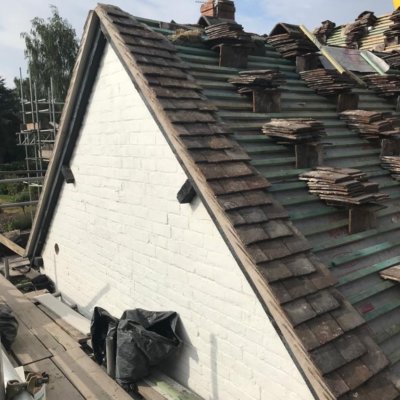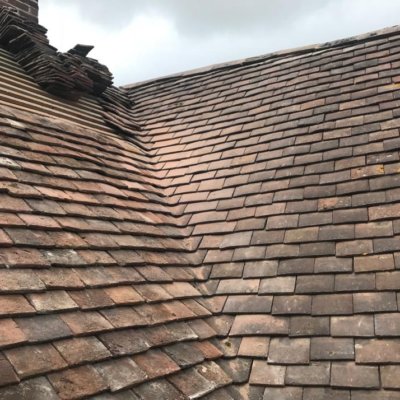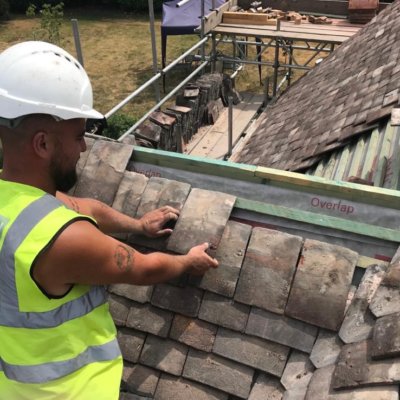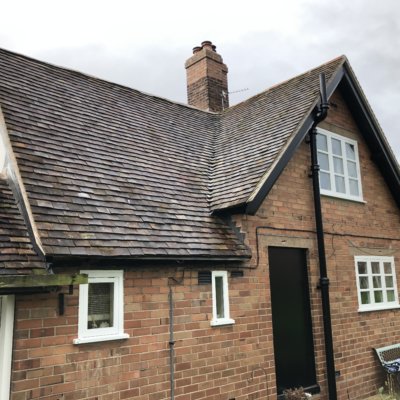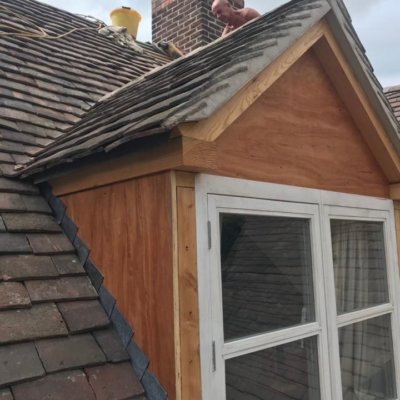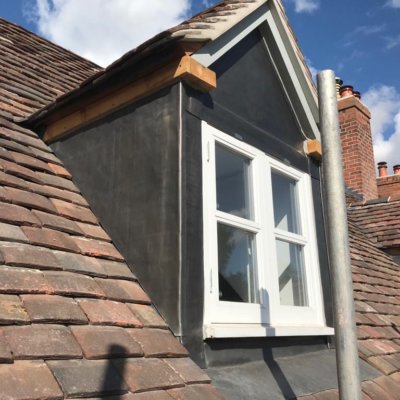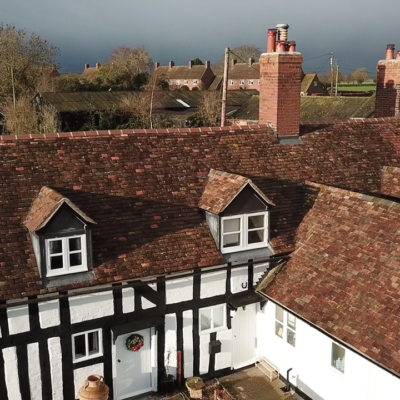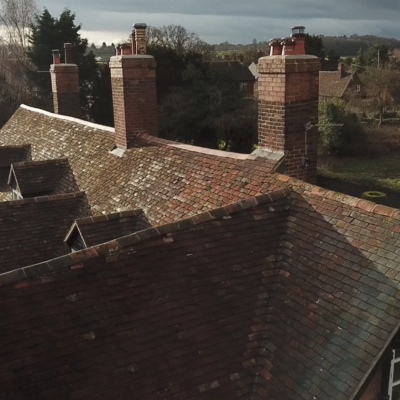13-16 Village Road is a beautiful row of cottages, set in the heart of the Shropshire countryside. Under the ownership of the local country estate, this 16th century building consists of black and white timber framed construction, with a clay ‘plain tile’ roof.
In 2018, our client decided to initiate a detailed roof renovation, to give this ageing building a new lease of life. Our client was passionate about finding a ‘Heritage Roofing Contractor’ with a proven track record in their field. A firm who could deliver an authentic re-roofing project, to the highest of standards. After a short tender process, Emerton Roofing were thrilled to be chosen as the preferred contractor.
This stunning roof construction consisted of various roof slopes and many prominent features – such as pitched and flat dormer roofs. The roof area predominantly featured two elongated verge to verge slopes (which contained 4 picturesque dormers). From out of these slopes emerged two large rear offshoots, changing direction at the point of vintage handmade valley tiles. Contained within the roofs were 3 large chimneys, each owning their own style and shape. In addition, there were 3 single storey tiled slopes as well as a traditional built-up flat roof area. Each respective area of this roof presented its own quirky features, meaning the project before us had a real identity which oozed with character.
The scale, variation and complexity of the tasks associated required a combination of quality workmanship and robust project management in order to restore this stunning 16th century building to its former glory. Emerton Roofing needed to call upon its carefully assembled talent within the business, in order to deliver the authentic restoration this roof craved.
In the spring of 2018 the scheme began, and the following sequence of events ensued:
- First, Emerton Roofing’s scaffold team carefully erected an eaves level traditional scaffold to the building’s perimeter. This to allow safe and practical working access.
- Two of our skilled tiling tradesmen then carefully removed the tiles from the roof, carefully sorting and stacking them on the scaffold.
- This allowed sympathetic replacement of certain deteriorated roof rafters. Installation of slab insulation between the (vaulted) ceiling rafters followed.
- Subsequently, our talented joiner continued to rebuild the crumbling dormer roof structures to the existing pattern, using quality hardwoods.
- Our tiling team then returned to ‘felt and batten’ the roof using BS5534 graded battens, premium breathable underlay and suitable galvanised nails.
- With the roof structure now sound, the building watertight and the historic tiles carefully stored, our scaffolders reconvened to extend the scaffold up and around the heads of the chimney stacks. This well thought out approach meant the scaffold was built up off sound roof timbers, rather than the valuable and fragile 16th century tiles – thus protecting their integrity ready for their next term.
- It was at this point our bricklayer entered the fray, repointing and rebuilding the heads of the chimneys. This was done using suitably gauged cement mortar, in attempt to add significant longevity to previously rebuilt stacks.
- Once the scaffold was removed it was the turn of felting team, to recover the small flat roof at the rear of the property. Continuing the theme of ‘re-creating an original detail using best and most authentic materials available’, we used a pour and roll type system consisting of hot bitumen and high tensile felts.
- The pitched roof was now ready for the tiles to be re-laid. However, before this could take place, it was necessary for management to source a collection of matching make up tiles, to fill the void left by a percentage of unusable original tiles.
- The ‘loading’ process came next, where the approximately ten thousand roof tiles were distributed in stacks across the roof battens, ready for laying. It was then up to our heritage tiling teams to meticulously lay the final roof covering, ensuring prominent half bond and neatly laying tiling. This quite a skill when you consider many of these undulating 16th century tiles have their own shape, size and character.
- Whilst installing the tiles, our tiling team completed the various roof/chimney junctions using appropriately gauged lead soakers and flashings.
- Roof mortar work followed when ridge and verge tiles were bedded onto ‘tops’ and undercloak respectively. This brought the tiling section of the project to a conclusion.
- The penultimate task involved our lead plumbing tradesman expertly cladding the dormer cheeks with Code 5 Milled Lead Sheet. This assiduous lead ‘bossing and welding’ job brought the dormers to life in both an aesthetical and functionality sense.
- Finally, the scaffold was removed, revealing a spectacle for all involved to be proud of.
Upon completion, Emerton Roofing were praised for their skill, determination and ability to transform this building of local significance back to its former glory. The project soon gained national recognition when it was nominated in the Heritage category at the National ‘2019 Roofing Awards’.
At Emerton Roofing, we are extremely proud to embrace traditional crafts and methods to provide genuine and authentic roof restorations such as Village Road for our valued customers.
